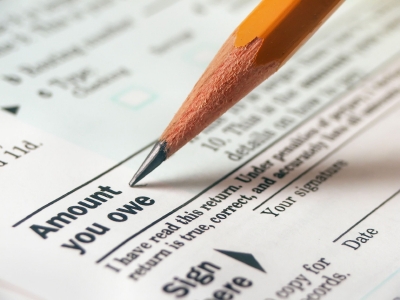 All set to do your taxes? Online sellers and freelancers all over the US are getting ready to start filling out their forms, or at least organizing their paperwork in order to prepare for April. If you’re like them, you’re probably wondering if there are any surprises in store for this tax season. Enter the 1099-K…
All set to do your taxes? Online sellers and freelancers all over the US are getting ready to start filling out their forms, or at least organizing their paperwork in order to prepare for April. If you’re like them, you’re probably wondering if there are any surprises in store for this tax season. Enter the 1099-K…
What is Form 1099-K?
To explain why we get the 1099-K, we first need to give you a very quick history lesson. The “tax gap” is the difference between how much income is reported to the government versus how much income is actually earned. There has always been a tax gap, but the government realized that someone people who make money online weren’t reporting all their income. Since this income is more easily traceable than say, income made in cash under the table, they decided to try and close the tax gap a little bit. Thus, through legislation, the 1099-K form was born.
The IRS has been tasked to track how much money each e-commerce seller made throughout a tax year. The 1099-K helps do this. Payment processors such as PayPal and Amazon tally sales and report them to both the seller and the IRS.
So if/when you get the 1099-K form, expect to learn something you probably already know: how much you made in 2012 through online sales.
What to do with the Form 1099-K
So what good is the form? Does it also come with your deductions and expenses calculated perhaps, or some crazy instructions on how to report it on your 1040 form? Is there some otherwise insidious reason the 1099-K exists?
Honestly, not really. There’s hardly any other information on the form other than your personal info, and there’s no evil plot associated with the form (that we know of). The 1099-K simply exists to report your earnings through online sales, both to you and the IRS.
As for using the form, compare it to your own calculations. If you haven’t done your own yet, sign up for a service like Outright to get a real look at how much you made through online sales in 2012. If there’s a difference between your calculations and the number reported on your 1099-K, you have to account for it somehow.
The Devil is in the Details
If you haven’t dealt with the 1099-K before, you should know some of the finer details of what to expect. First of all, you might not even get the form in the first place! That’s right, all this talk and it may not even come your way.
Did you make at least $20,000 in online sales last year through 200 or more transactions? If not, you won’t be getting the form. You could make $20,000 but only have 199 transactions and you won’t get the form. Or if you use several payment processors (say you sell on eBay and make money through PayPal, but also accept money through an online credit card merchant account) and didn’t make $20,000 through 200 transactions via any single payment processor, you also won’t receive the form.
If you received a 1099-K last year, you may not be sweating it. But there is one more thing to know. The 1099-K “counts” this year. Last year was a pilot program for the form, since it was brand new. This year, though, all bets are off. If your income totals are different from the payment processors’, then you better have a good reason. If not, you may face stern letters, automatic adjustments, audits, or even fines.
1099-K’s should be coming to mailboxes near you by January 31. Did you receive a 1099-K last year? Are you expecting one this year?
This guest post is brought to you by Outright.com, the alternative to Mint for business. Sign up today for an Outright account and make tax time less taxing!